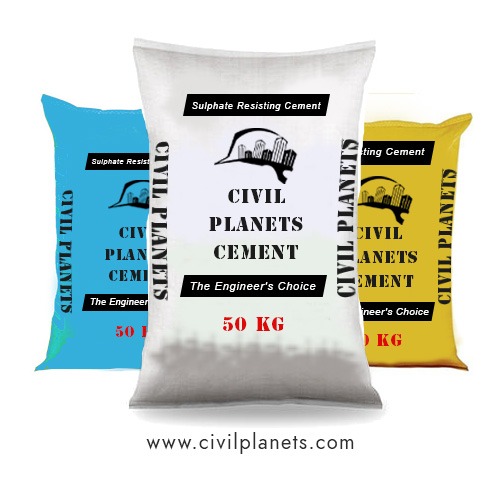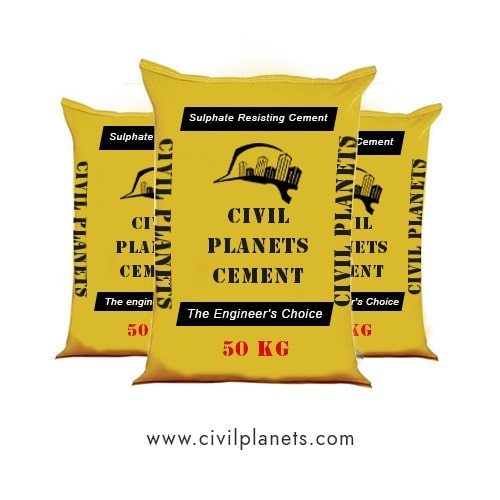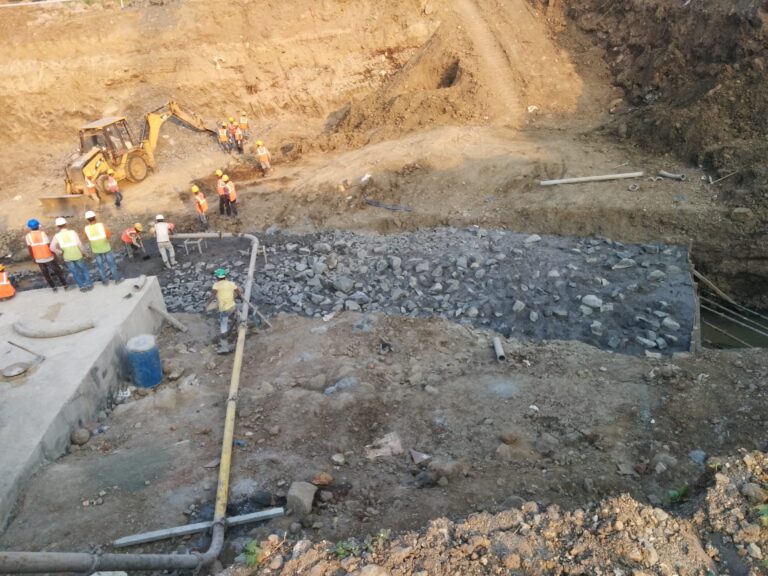The cement is highly consumable material in construction activities. The primary role of cement is to act as a binding agent to bind the ingredients and make the element strong.
The durability of the structure depends on the quality and types of cement used for construction. In a nutshell, the strength and durability of the structure depend on the properties of cement.
The properties of cement can be classified as physical and chemical properties.
Physical Properties Of Cement
1. Fineness of Cement – The fineness represents the particle size of cement. If the cement contains coarser particles, it reduces the workability, rate of hydration, which directly affects the strength gain of concrete or mortar.

The fineness of cement helps the concrete to attain the strength earlier. At the same time, more fineness of cement may lead to form cracks in the concrete surface and affect the durability of concrete.
The air permeability test is used to determine the fineness of the cement. It has been measured by specific surface area.
2. Soundness – The ability of cement paste’s nil change in its volume after hardening without delayed expansion is known as the soundness of cement. In the case of volume change in cement, it affects the strength of the structure.
The Le Chatelier Test and Autoclave Test are used to find the soundness of cement.
3. Consistency – The ideal requirement of water to create the chemical reaction between cement and water to form a homogeneous end product is called the consistency of cement.
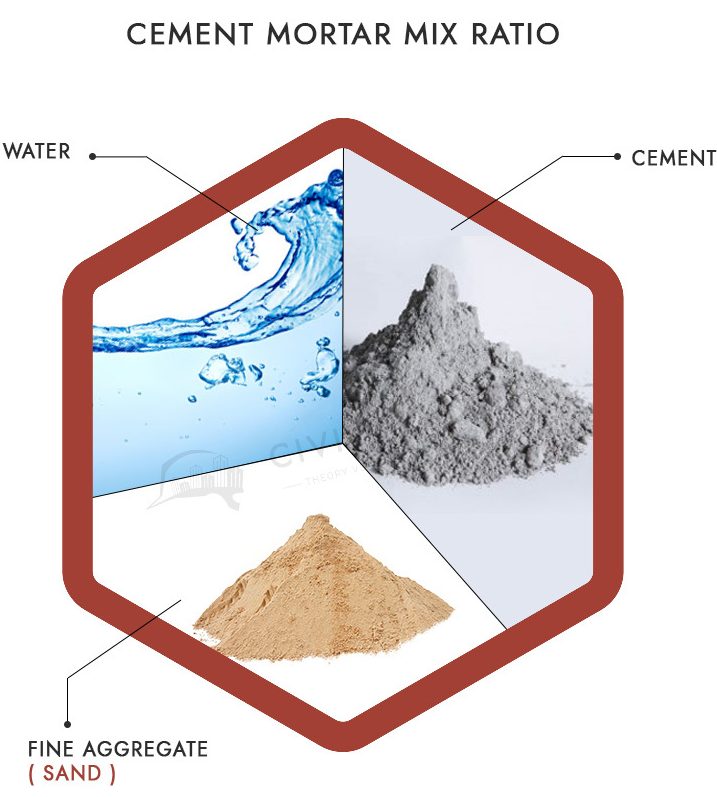
The consistency for cement is determined by the Vicat test apparatus. Identification of the cement consistency helps to figure out the required water content to mix the material for concrete or mortar.
Improper usage of the water-cement ratio will lead to improper concrete or mortar blending and reduces the strength of the element.
4. Strength – The primary role of cement is to act as a binding agent to bind the ingredients and make the element strong. The strength of the cement has been classified as compressive, tensile & flexural strength. Based on the compressive strength of the cement, it will be graded, and it helps to utilize the cement in various works.
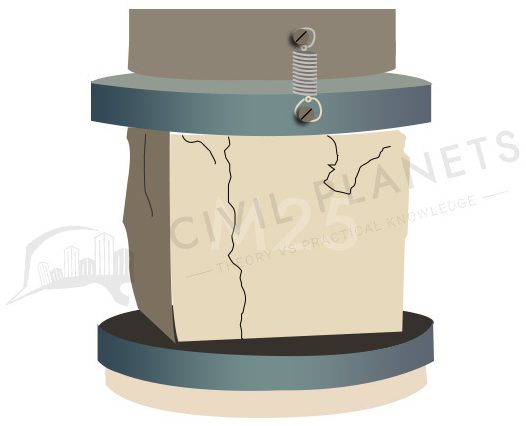
The strength of cement will be affected by the water-cement ratio, quality of cement, curing period, mix ratio, and grading of coarse aggregate.
5. Setting time – The setting time of cement has been classified as an initial setting and final setting time.
The time required for the cement to blend with the other materials and formed into solid-state is called the initial setting time of cement. Generally, the initial setting time of cement is in the range of 30 to 45 minutes.

The time required for the concrete or mortar to reach the hardened state and bears the load is called the final setting time of cement. The maximum setting time of cement should not exceed 10 hours.
The Vicat apparatus has been used to determine the cement setting time.
6. The heat of hydration – The heat formation when water reacts with the cement while forming the end product (cement paste, concrete, or mortar) is called the heat of hydration. In larger areas where the mass concrete is used, the high heat of hydration will form shrinkage cracks in concrete surfaces.
7. Loss of ignition – The cement loses its weight when it is heated at 900 – 1000°C and the weight loss of cement due to heating is called loss of ignition. The cement may be subjected to pre-hydrate or carbonation because of extended storage.
The cement weight loss on ignition test is used to find the pre-hydration or carbonation of cement. The setting time and strength of the cement will be affected by the pre-hydration.
8. Bulk density – The bulk density of cement is 1440 Kg/Cum. (unit weight of construction materials). The density of cement slightly changes when air is entrapped between the cement particles, but it does not induce a significant impact.
9. Specific gravity – The specific gravity of cement will vary based on the type of cement. Determination of specific gravity of cement is used in a mixed proportion of concrete or mortar. The specific gravity of cement is calculated by comparing the cement weight with water weight equal to the weight of cement.
Chemical Properties of cement
The cement is manufactured by mixing many different chemical particles, which is mentioned below. The table shows the different percentages of chemical admixtures added in Portland cement.
| Chemical elements | Abbreviation | Percentage |
| Lime | CaO | 63% |
| Silica | SiO2 | 22% |
| Alumina | Al2O3 | 6% |
| Iron Oxide | Fe2O3 | 3% |
| Sulfur Trioxide | SO3 | 1.75% |
| Magnesium Oxide | MgO | 2.5% |
| Alkalis | Na2O & K2O | 0.5% |
| Loss on ignition | – | 1.5% |
| Insoluble Residue | – | 0.25% |
- Lime – The proportion of lime is the major constituent of cement, which influences the strength and setting time of cement. The percentage of lime should be added carefully else it impacts the soundness of cement (expands) and makes it disintegrated.
- Silica – The silica impacts the strength of the cement by forming dicalcium and tricalcium silicate. Silica gives more strength to the cement, but at the same time, it extends the setting time of cement.
- Alumina – Alumina contains good resistant capacity against chemical attack. Excess of alumina will reduce the strength of cement and increase cement setting time. High alumina cement (HAC) is a type of cement used in industrial structure work where there is a possibility of chemical attacks.
- Calcium Sulphate – The calcium sulphate increases or retards the initial setting time of cement, and is present in gypsum.
- Iron Oxide – The iron oxide helps to blend the raw materials while manufacturing the cement, and gives colour to the cement.
- Magnesium Oxide – A higher percentage of magnesium oxide impacts the soundness of cement. So it should be added in cement in minimal quantity.
- Sulphur Trioxide – A higher percentage of sulphur trioxide impacts the soundness of cement and also expands it. So the percentage of sulphur trioxide should not be more than 2%.
- Alkalies – Excess presence of alkalies will cause efflorescence. So the percentage of alkalis in cement should be a minimum.
Harmful constituents of cement
Excess of alkali oxide and magnesium oxide will adversely affect the quality of cement.
The presence of alkali oxide does not exceed 1%; else, it severely affects the strength of the structure. At the same time, magnesium oxide does not exceed 5%; else, it forms cracks on concrete surfaces.
Happy Learning 🙂

